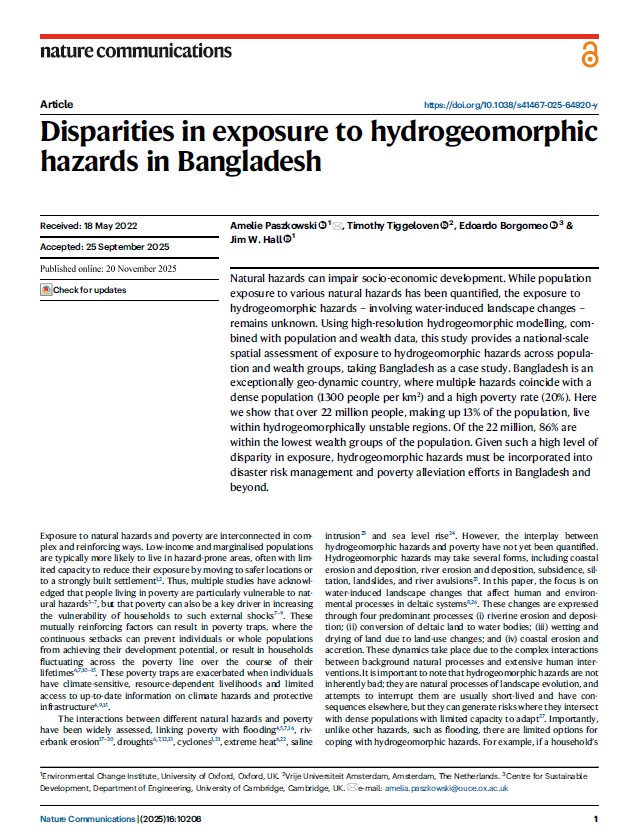Authors: Amelie Paszkowski, Timothy Tiggeloven, Edoardo Borgomeo & Jim Hall
Natural hazards can impair socio-economic development. While population exposure to various natural hazards has been quantified, the exposure to hydrogeomorphic hazards – involving water-induced landscape changes – remains unknown. Using high-resolution hydrogeomorphic modelling, combined with population and wealth data, this study provides a national-scale spatial assessment of exposure to hydrogeomorphic hazards across population and wealth groups, taking Bangladesh as a case study. Bangladesh is an exceptionally geo-dynamic country, where multiple hazards coincide with a dense population (1300 people per km2) and a high poverty rate (20%). Here we show that over 22 million people, making up 13% of the population, live within hydrogeomorphically unstable regions. Of the 22 million, 86% are within the lowest wealth groups of the population. Given such a high level of disparity in exposure, hydrogeomorphic hazards must be incorporated into disaster risk management and poverty alleviation efforts in Bangladesh and beyond.

